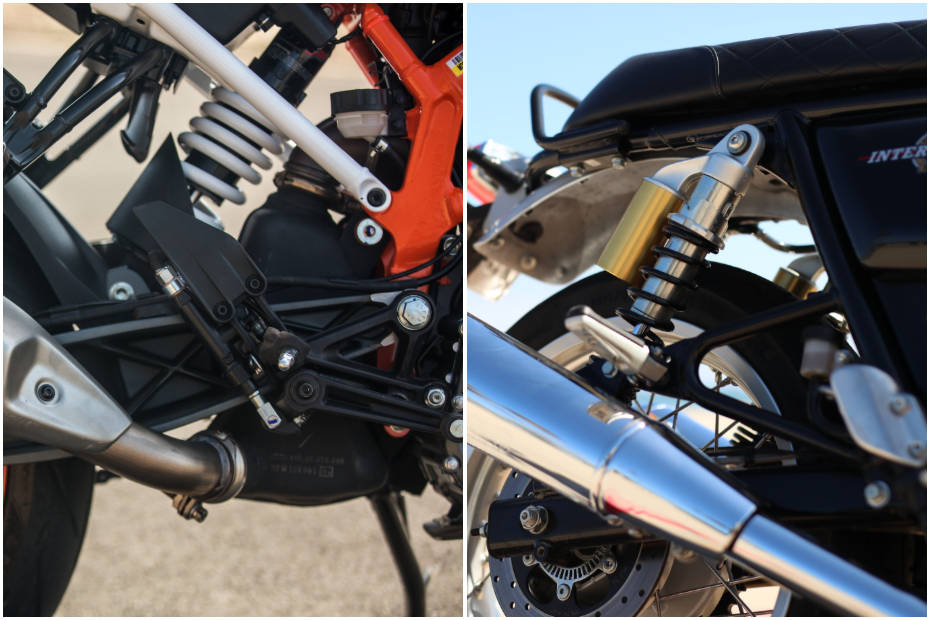Monoshock Vs Twin Shock Absorbers: Differences Explained
Published On Oct 22, 2019 09:57 AM By Gaurav Sadanand for 2020 KTM 390 Duke
- 14904 Views
- Write a comment
Is a monoshock a better bet compared to a twin-shock setup? Here’s a detailed look at the advantages and disadvantages of both

We have already covered the differences between an upside-down fork and a telescopic suspension. But what about the rear? Introduced back in 1913, rear-suspension setups dampen jolts sent to the rider through rough terrains. What started as a twin-shock configuration on bikes moved on to a monoshock setup in the late 80s. So why the sudden shift? Is a monoshock actually a better bet compared to a twin-suspension setup? If so, why wasn’t it introduced earlier?
Both configurations have their advantages and disadvantages from cost and performance to timely maintenance. Here’s a closer look at the two:
Advantages of Dual Shocks:

Simply put, two shock absorbers do a better job of hauling load compared to a single setup. They are also tuned to be softly sprung, which enables them to absorb bumps slightly better, thus offering a supple ride. A dual-suspension setup is easier to manufacture and more cost-effective. Besides, it’s also easier to maintain.
Advantages of Mono Shocks:

The use of a single shock means using a single valve, which exerts pressure equally unlike twin shocks. To add to this, the piston in a monoshock is much wider than the one found on twin-shock absorbers. In effect, monoshocks offer better and more precise damping, which results in better handling and stability. You’d mostly find a bike using a monoshock handle better than a twin-shock motorcycle.
Disadvantages of Dual Shocks:

As mentioned earlier, dual-shock absorbers have two valves and two pistons that work independently. As a result, it’s extremely difficult to match the variance between shocks. This leads to twisting forces on the swingarm and consequently, affects the bikes handling, braking, and wear characteristics on the rear wheel. The uneven damping offers less stability while cornering or while pushing through triple-digit speeds on highways.
Disadvantages of Monoshocks:

Monoshocks are more expensive to manufacture and maintain thanks to their complexity. The system isn’t the best at handling excessive loads, which could lead to the shock collapsing altogether. Another aspect that works against monoshocks is the age factor. They are also expensive to replace.
